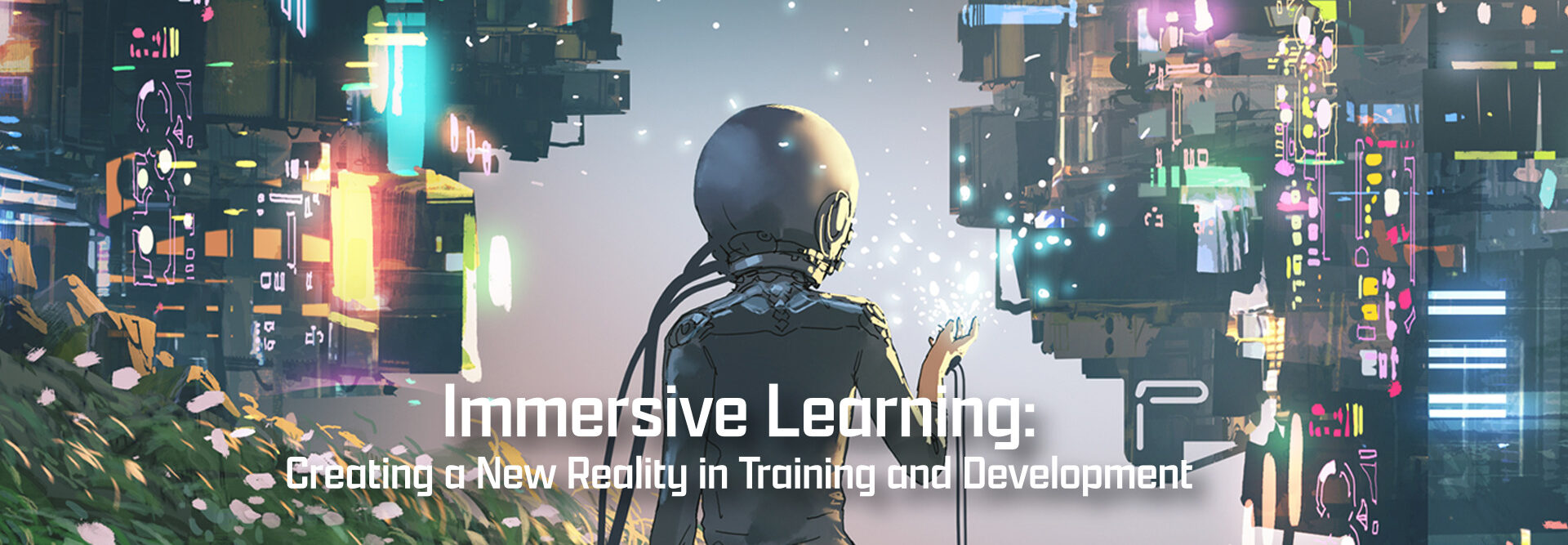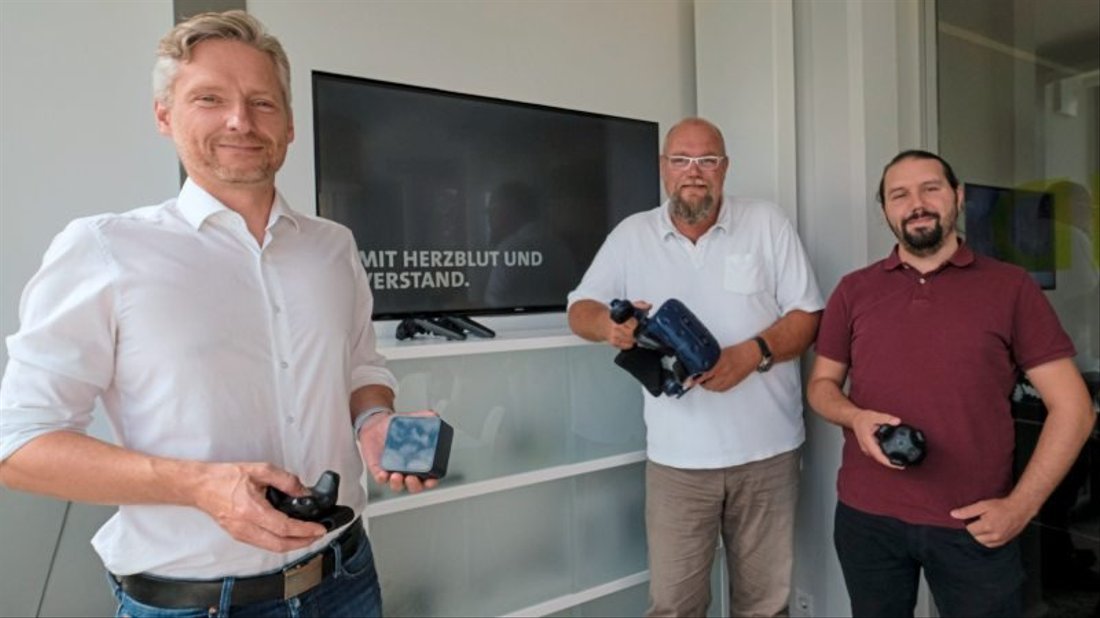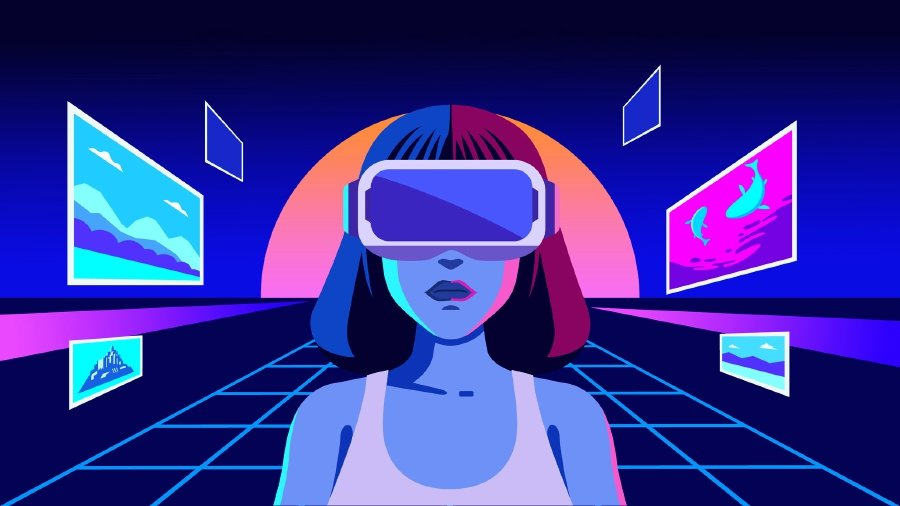A major financial services provider is going through an organizational transformation that requires communication across all departments. It has become clear that teams in some departments are not communicating effectively, severely hindering the change process. Feelings of mistrust have surfaced. The chief learning officer (CLO) of the company has decided that an intervention is required. She needs to gain the confidence of the team members to improve the flow of information across silos in a constructive manner. Instead of hiring an organizational consultant or publishing an online tutorial, the CLO invites team members to participate in a virtual mission to the surface of Mars where they confront unexpected challenges. In the safety of their own workspace and without any travel expenses, participants put on a virtual reality (VR) headset and are instantaneously teleported to the Mars basecamp, where they receive their mission briefing.
Very quickly participants who are undertaking the mission stop asking themselves “What do financial services have in common with saving humanity on Mars?” and start asking constructive questions like “What aspects of information should be shared?” or “How should we reach an effective solution as a team?” It quickly becomes evident that participants are having fun and being creative while the immersive learning system collects crucial data about their choices and decision-making strategies as competing teams.
Immersive learning opens new frontiers and capabilities that have never been accessible before in corporate learning. Today, by virtue of accessible turn-key solutions, CLOs and education professionals can drive impact while boosting learning engagement, knowledge retention and learner compliance through data-driven synchronous and asynchronous learning.
Immersive Training Just Got Easier
Immersive learning is a simple yet powerful methodology that can engage learners in an absorbing virtual environment where they are active in a scenario that challenges them to make decisions and explore the environment in a truly authentic way. Participants can be immersed in ultra-realistic scenarios, where they can enter and act upon sensory rich environments by initiating a series of actions using different interfaces.
Most people would have seen or experienced people playing virtual games while wearing headsets covering the upper part of their faces and holding attachments in their hands. For entrepreneurs designing immersive interfaces, the challenge is to move the needle from commercial apps and games into the blue ocean of learning and development (L&D). In this article, we are going to argue that immersive learning solutions are on the cusp of a revolution.
Extended reality (XR) headsets have been around for years, but only recently have they entered anything approaching mainstream use thanks to all-in-one devices and reduction of costs alongside improved performance. In the early days of development, rudimentary desktop headsets were endorsed by pilot schools, airlines and Air Force academies. Participants got up to speed on flight controls and cockpits, takeoff and landing patterns. The systems were expensive to buy and the scenarios difficult to create. Furthermore, participants were expected to jump into real-life situations in parallel to their virtual training.
Breaking Down Corporate Silos
In the corporate arena, L&D professionals are continually challenged to train their workforce using traditional systems that were never designed for hybrid work, scalability and sustainability. Furthermore, L&D professionals are often constrained by a highly complex competitive and regulatory environment in today’s digital landscape. Breaking through traditional silos that weigh down employee productivity is exactly where immersive learning capabilities can provide added value.
Using an immersive learning platform, L&D professionals can measure the performance, cognitive abilities and personality traits of their employees to help them grow in the right direction, by personalizing the learning process. Moreover, L&D professionals can do this without having to get bogged down in individual questionnaires or self-reports which could, for example, trigger massive paperwork under personal data protection regulations.Immersive learning is a simple yet powerful methodology that can engage learners in an absorbing virtual environment where they are active in a scenario that challenges them to make decisions.
The Path to Immersive Learning
Given an introductory training course, L&D professionals can oversee the design, development, production and enhancement of a highly sophisticated and secure software suite dedicated to the needs of their workforce. At the same time, customized content is bundled into a software platform and distributed at the exact time and place designated by the L&D departments and learning professionals. Founded on advanced immersive technologies, AVRIS provides immediate access to data-driven knowledge and experience, which are strengthened by a global community of lifelong collaborators.
Groundbreaking? That’s a big claim for a startup. Let’s unpack that assertion. Traditional learning solutions typically begin and end with the final answers and response times of participants. By contrast, analytical engines that receive inputs from immersive experiences are able to measure every single interaction learners perform while wearing the headset. Simultaneously, the engine records behaviors by calculating gaze direction, time lapse, decision strategies, and the location and angle of the head and hands at an astounding precision.
When a participant exits an immersive environment, the immersive analytical engine goes to work at lightning speed and returns a richer and far more comprehensive data set than a traditional method could possibly provide. Having gleaned tens of thousands of data points per participant, the machine deep dives into the behavior of candidates, providing insights about them with far greater rigor, accuracy and robustness than other approaches, digital or human driven. Debrief and reflection are enriched as they are based on real-time data, ultimately impacting the participant’s capabilities.
Learning how to solve problems under stress, for example, is a skill that can be learned and enhanced in an immersive environment. In the past, L&D professionals used questionnaires and self-reports to discover an employee’s susceptibility to stress or other emotional situations. In a virtual environment, the engine can analyze human behavior itself. How is this achieved? Instead of asking individuals how stress affects their performance, learning professionals will let the behavioral analytics engine do the work for them. Participants enter simulated virtual experiences where real-world problems need to be solved. They gain knowledge through their interaction with other participants who have different skill sets and experiences.
Measuring Interactions Effectively
With the continuous growth of immersive learning solutions and offerings, corporate partners and individual learners are provided with a growing range of just-in-time training solutions. Such solutions can improve the experience curve of employees, thereby increasing the competitive advantage of their respective companies. Gamified, interactive and data-driven virtual scenarios can get employees up to speed on the job much faster than simply adding new development training components. They reduce the length of time it takes between existing training programs and their application by employees on the factory floor or in the boardroom. Costs are cut and quality is improved.
Moreover, the analytical engine can transform the lifelong learning experience of participants, making for a talent-retention story. A group of psychologists, neuroscientists and data scientists design simulations for specific situations, which are then subjected to an extensive internal validation phase. New and enriched learning experiences are being developed and added to the portfolio regularly.
Meanwhile, the virtual trip to Mars was a major success. As a result of immersive learning, the organizational transformation at the financial services provider was completed on time and within budget. Moreover, a lifelong learning process has begun within the firm as the CLO has implemented immersive learning solutions across the organization.
Investment in the development and growth of the company’s greatest asset is obviously a worthy effort. But it is up to learning professionals to choose impactful, engaging and cost-effective methods to fulfill organizational objectives. Immersive learning presents an unprecedented combination of these, and thanks to recent technological breakthroughs, has become accessible as well as affordable.
Quelle:




